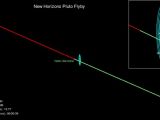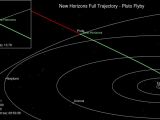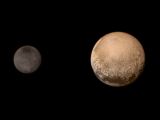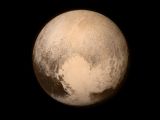This July 14 might seem like a perfectly ordinary day to us Earth dwellers, but it really isn't. Au contraire, great things are happening at the edge of our Solar System.
Earlier today, at 7:59 a.m. EDT, US space agency NASA's New Horizons probe reached dwarf planet Pluto at long last, becoming the first spacecraft ever to approach the orb and image it together with its moons.
During its historic flyby of Pluto, New Horizons came stunningly close to the dwarf planet, and got to study its surface and the makeup of its atmosphere in unprecedented detail.
In the days to come, mission scientists will be hard at work sifting through data and images beamed back to Earth by the spacecraft, which means that, here on our planet, the adventure is just now starting.
It was a long way to Pluto
The New Horizons spacecraft launched in January 2006 from the Cape Canaveral Air Force Station in Florida, US. To reach its target orb, it journeyed through space for nearly a decade and covered a distance of over 3 billion miles (almost 5 billion kilometers).
Just for the record, it must be said that, when at its farthest, dwarf planet Pluto sits some 4.67 billion miles (7.5 billion kilometers) away from our planet. When at its closest, it is about 2.66 billion miles (4.28 billion kilometers) away.
In February 2007, the spacecraft encountered Jupiter and got a gravity boost from it. Then, in the fall of 2014, it got close enough to its target to begin reconnaissance. Check out the images included in the gallery below to get a better idea of New Horizons itinerary.
Why send a probe to Pluto?
What with all the commotion brought about by this NASA mission, some might be wondering why the space agency decided to send a spacecraft to visit the Pluto system to begin with. After all, Pluto is mind-bogglingly far away from us and isn't even a proper planet, so why bother?
Well, Pluto might be just a dwarf planet hanging around on the outskirts of our cosmic neighborhood, but this does not change the fact that, like other celestial bodies of its kind, it holds secrets about the formation of our Solar System.
Thus, this orb is part and parcel of the Kuiper Belt, which in turn is a region at the edge of the Solar System where whatever extra “ingredients” weren't used in planet formation processes reside. In not so many words, the Kuiper Belt is a relic from the formation of our Solar System.
The reason scientists are interested to learn more about Pluto and the Kuiper Belt that is its home is that this should help better explain the formation of our own planet. Basically, it all boils down to trying to figure out how we got here.
Well then, was it worth it?
True, NASA's New Horizons mission came with a price tag of $700 million (about €631 million), but as it turns out, it was money well spent. Thanks to the adventurous probe, scientists now know much more about this distant orb.
For starters, New Horizons found Pluto's diameter to be approximately 50 miles (80 kilometers) wider than previously assumed. Its newly measured girth, i.e. 1,473 miles (some 2,370 kilometers), makes Pluto the absolute largest object thus far documented in the Kuiper Belt.
Before NASA's New Horizons' probe got around to sizing up the orb and providing the most accurate measurement yet of its silhouette, the title was held by Eris, another dwarf planet with a diameter of 1,445 miles (2,326 km).
Besides, the spacecraft revealed that Pluto has an ice cap and even documented nitrogen escaping its atmosphere. It also imaged its accompanying wobbly moons, helped determine their exact diameter and studied their behavior in orbit, all this before even making its closest approach of the orb.
What's next for New Horizons?
NASA's New Horizons might have made its closest approach to dwarf planet Pluto just hours ago, but this does not mean its mission is over. Should all go well, the spacecraft will go on studying the Pluto system from afar for several weeks to come.
Eventually, the probe will move on to studying other celestial bodies in the Kuiper Belt. Then, a few years from now, it will enter interstellar space.
The probe is quite a sentimental
This might come as a bit of a surprise, but the New Horizons' probe did not travel to the Pluto system all on its own. In a capsule hidden on the inside of its upper deck, the spacecraft carries just one pinch of the ashes of late astronomer Clyde Tombaugh.
For those unaware, Clyde Tombaugh was the one who discovered Pluto back in 1930. He died in 1997 and so never got to see New Horizons leave Earth en route for the orb that he identified at the edge of the Solar System, but his family agreed to send part of his ashes in deep space aboard the probe.
“Interned herein are remains of American Clyde W. Tombaugh, discoverer of Pluto and the solar system’s ‘third zone.’ Adelle and Muron’s boy, Patricia’s husband, Annette and Alden’s father, astronomer, teacher, punster, and friend: Clyde Tombaugh (1906-1997),” reads a message inscribed on the capsule carrying the late astronomer's remains.
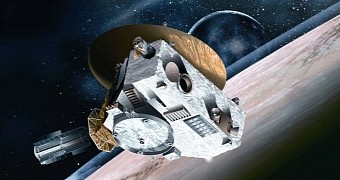
 14 DAY TRIAL //
14 DAY TRIAL // 
